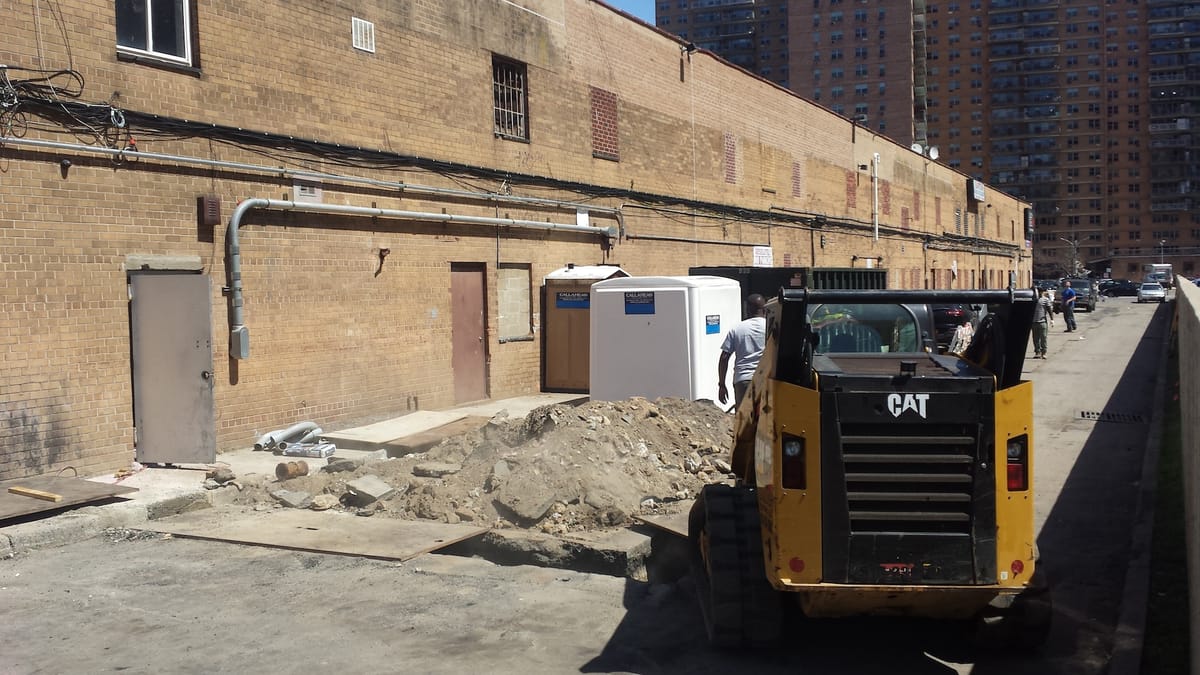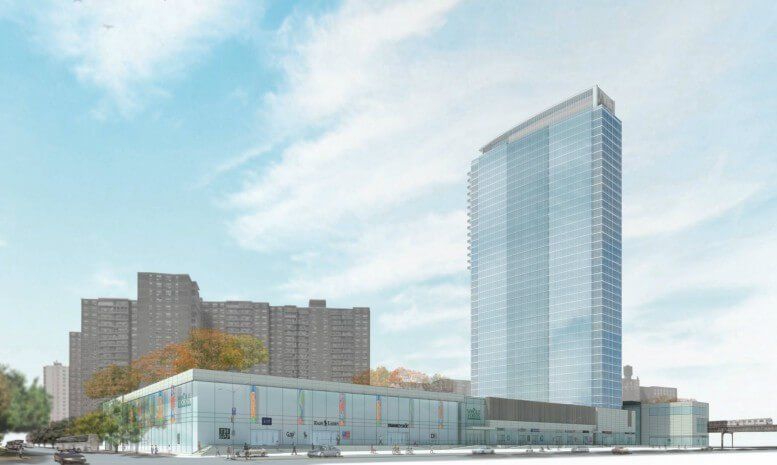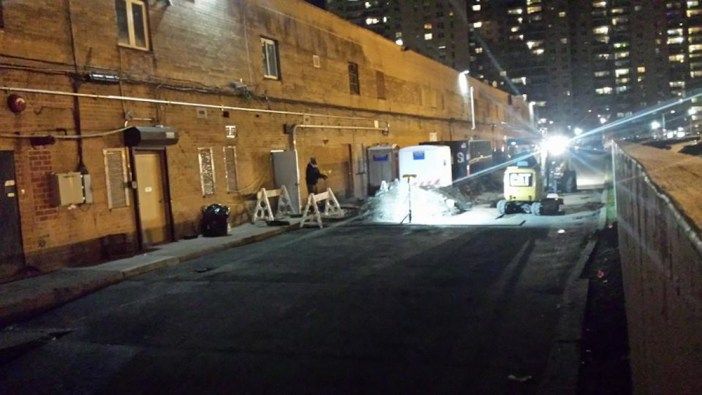Developer Under Fire For Construction At Site Of 40-Story Tower


Neighbors are crying foul about construction taking place at the site of the 40-story tower to be built over the Trump Village Shopping Center — flagging the developer for working after-hours, violating lease terms, and possibly releasing dangerous chemicals buried beneath the property.
Developer Cammeby’s International was recently hit with a lawsuit seeking $75 million in damages from one of its commercial tenants, The Real Deal reports. The clothing chain DII, which has a location in the shopping center, alleges Cammeby’s construction has “disrupted the day-to-day operations” of its Neptune Avenue store. DII still has seven years left on its lease, but argues the construction is an attempt to push them out, according to The Real Deal.
In response to the lawsuit, Cammeby’s spokeswoman Christa Segalini said the developer has “gone above and beyond standard development practice” to allow DII and other retailers to remain open.
“As the result of a carefully aligned construction schedule, we are able to ensure that no tenant will need to relocate from its current space until the new site is ready,” she said in a statement. “Unfortunately, DII has decided that it would rather litigate than continue working together with the mutual goal of meeting the community’s needs.”
The lawsuit is the latest in a string of complaints about the construction. Public records show neighbors have made several complaints about excavations being done without a posted permit. Locals have raised concerns the project might exhume a cache of toxic chemicals left behind by a manufactured gas plant that used to operate at the site.

The Department of Environmental Conservation, which is responsible for keeping tabs on how the contaminants are removed, busted a contractor last month for working past their 10pm curfew while digging a trench for a temporary power line, the agency confirmed.
Brooklyn Daily first reported the incident, in which an inspector was called to the site in response to an odor complaint. However, the DEC said an air quality monitor, provided by National Grid, was present during the work and did not detect “action levels” of toxic fumes. The odor smelled by the complainant was likely diesel exhaust from the construction equipment, a DEC spokesperson said.
Brooklyn activist and Democratic district leader candidate Chris McCreight, who works in an office that overlooks the site, said he’s spotted construction crews at the site as late as 2am. He posted photos on his Facebook page of workers digging around the area late at night.

McCreight said he found work unnerving and questioned whether an air quality monitor would be present that late at night.
“There was just a bunch of guys digging into the ground,” he said. “It was a concern because it’s making a lot of noise and waking people up. But it’s also raised concerns there was no air monitor.”
Because National Grid inherited the polluted land from the gas plant, it is responsible for the cleanup. However, McCreight said he wanted to see an independent air monitor, appointed by the community, to oversee the removal of the toxins.
“National Grid has very little interest in this,” he said. “The community and developer come together and determine who that monitor is going to be.”
The DEC reports an investigation conducted with National Grid found coal tar and petroleum contamination beneath storefronts in the shopping center. Excavation work needed to construct the tower will require air purification systems to prevent the release of dangerous odors.
Although DEC is still waiting for a final plan about how to remove the toxins, the agency said “any such remediation work will be conducted with the protection of neighborhood residents a top priority”
In a statement, Cammeby’s said they working with DEC and National Grid to “arrive at a solution that is protective of human health and the environment. Once plans are finalized, we look forward to updating the community.”
“Our approach is intended to minimize the amount of excavation on the site, but some remediation of the subsurface soil will be required,” the statement read.




